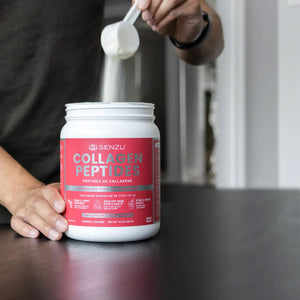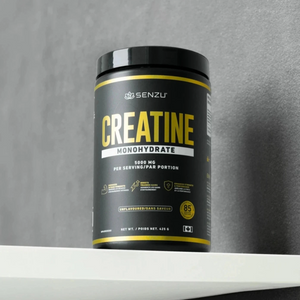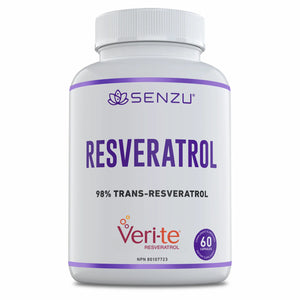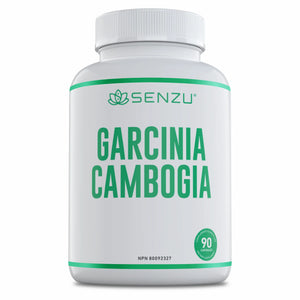Micronized vs. Regular Creatine: What's the Difference?

When shopping for creatine monohydrate, you'll often encounter two main options: regular creatine and micronized creatine. While both contain the same active ingredient, there are some practical differences that might influence your choice.
Let's break down what sets them apart and help you decide which option might work better for your needs.
What Is Micronized Creatine?
Micronized creatine is regular creatine monohydrate that has been processed to reduce the particle size by up to 20 times smaller than standard creatine powder. This process doesn't change the chemical structure or effectiveness of the creatine itself, it simply makes the particles much finer.

Think of it like the difference between coarse salt and fine table salt. Both are chemically identical, but the finer particles behave differently when mixed with liquids.
Key Differences
Solubility and Mixing
Micronized Creatine: Dissolves much more easily in water and other liquids. The smaller particles mean less settling at the bottom of your glass and a smoother texture when drinking.
Regular Creatine: Tends to be grittier and may not dissolve completely, often leaving a sandy residue at the bottom of your drink. Requires more stirring to mix properly.
Taste and Texture
Micronized Creatine: Smoother texture with less grittiness. Many users find it more pleasant to drink, especially when mixed with just water.
Regular Creatine: Can feel gritty or sandy when consumed, which some people find unpleasant. The texture can be more noticeable, particularly in plain water.
Absorption
Micronized Creatine: The smaller particle size may theoretically lead to slightly better absorption, though both forms are effectively absorbed by the body.
Regular Creatine: Still highly effective and well-absorbed. The difference in absorption between the two forms is minimal in practical terms.
Cost
Micronized Creatine: Typically costs slightly more due to the additional processing required to create the smaller particles.
Regular Creatine: Generally the more economical option, offering the same creatine content at a lower price point.
Effectiveness: Does It Really Matter?
From a performance and results standpoint, both micronized and regular creatine monohydrate are equally effective. The research supporting creatine's benefits has been conducted using both forms, and your muscles can't tell the difference once the creatine is absorbed.
The choice between the two often comes down to personal preference and convenience rather than effectiveness.
Who Should Choose Micronized Creatine?
Consider micronized creatine if you:
-
Prefer smoother-textured supplements
-
Want easier mixing and less settling
-
Are sensitive to gritty textures
-
Don't mind paying a bit more for convenience
-
Mix creatine with just water (rather than smoothies or other drinks)
Who Should Choose Regular Creatine?
Regular creatine might be your best choice if you:
-
Want the most cost-effective option
-
Don't mind a slightly grittier texture
-
Mix creatine into smoothies, shakes, or flavored drinks where texture is less noticeable
-
Prioritize budget over convenience
Practical Tips for Both Forms
For Regular Creatine:
-
Mix with warm water first to help it dissolve better
-
Stir thoroughly and let it sit for a minute before drinking
-
Consider mixing it into smoothies or protein shakes to mask texture
-
Use a shaker bottle with a mixing ball for better dissolution
For Micronized Creatine:
-
Mixes easily with room temperature water
-
Still benefits from stirring, though less is needed
-
Works well in any liquid of your choice
-
Less likely to settle, but still give it a quick stir before drinking
Storage and Shelf Life
Both forms should be stored in a cool, dry place in their original containers. Moisture is the enemy of creatine powder, so keep the container tightly sealed. Both regular and micronized creatine have similar shelf lives when stored properly.
The Bottom Line
The choice between micronized and regular creatine comes down to personal preference and budget. If you're just starting with creatine and want the most economical option, regular creatine monohydrate will serve you perfectly well. If you prefer convenience and a smoother drinking experience, and don't mind spending a bit more, micronized creatine might be worth the extra cost.

Remember, the most important factors for creatine success are:
-
Choosing a reputable brand with third-party testing
-
Taking it consistently (3-5g daily)
-
Staying well-hydrated
-
Pairing it with a solid training program
Whether you choose micronized or regular, you'll get the same muscle-building, performance-enhancing benefits that have made creatine monohydrate one of the most trusted supplements in fitness.
The best creatine is the one you'll actually take consistently, so choose the form that fits your preferences and budget.

















